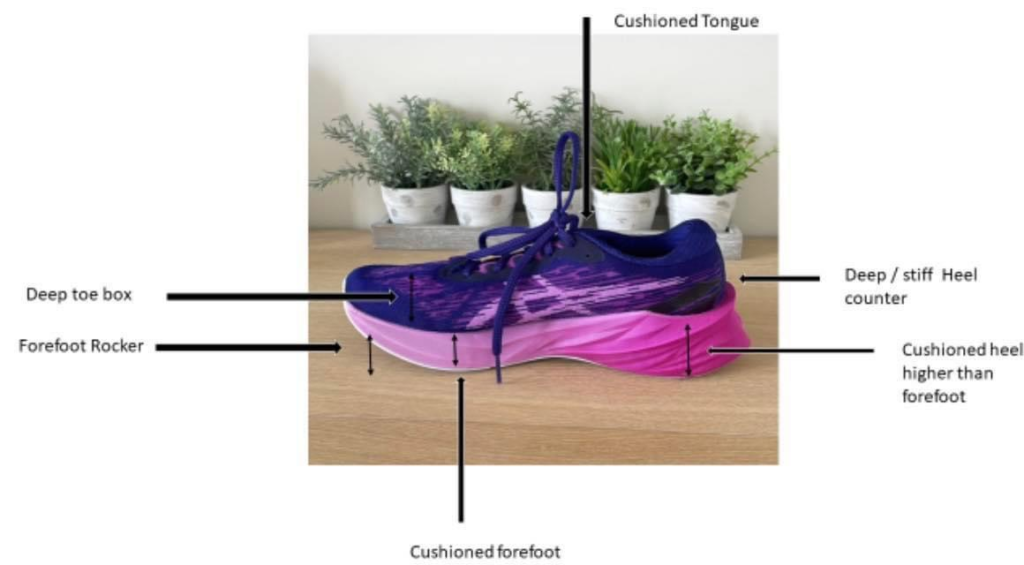One of the most important lifestyle changes you can make to help many musculoskeletal conditions is to your footwear.
Shoes that are supportive with the correct length, width and depth to accommodate your foot are going to help with foot and ankle pain. Laces or fastenings are the best way to keep a shoe on your foot.
Ill-fitting shoes increase your risk of:
- foot and ankle pain
- slips
- falls
What to consider
You should consider:
- the fit of the shoe and how comfortable it is
- the function of the shoe and how it affects the movement of your foot when walking
Look for a shoe that has the following qualities:
- Heel height: Heels should be broad, stable and between one inch and one and a half inches high.
- Soles: Soles should be firm and non-pliable. Aim for a thicker rubber soled shoe which is non slip and only flexes at the toe joint area.
- Length: Your footwear should reflect the shape and size of your foot and have around 1-1.5cm (a thumbs width) gap between the end of your longest toe and the shoe to allow room for your toes to move.
- Width: Your shoe should be wide enough to fit the broadest part of your foot, don’t forget your foot shape changes when you stand up.
- Depth: The toe box needs to be deep enough to accommodate the depth of your toes and instep.
- Heel Counter: The back of the shoe should be firm and fit snugly round the back of the heel.
- Fastenings: Lacing or velcro straps are often best as they are adjustable and help to hold the shoe firmly to the foot.
- Rocker: A rocker at the forefoot can be helpful at reducing the strain through your foot at the push-off phase of walking, helping reduce pain levels in your foot and improve the function of your foot.
- Removable footbed: Having a good fitting shoe where the insole that can be easily removed allows for you to add your own orthotic or custom footbed to help tailor your shoe to your own individual needs. This can help improve your walking or sporting activities and help with foot or ankle pain.

If you are experiencing foot or ankle pain
If you are experiencing pain in your foot or ankle, please follow this guidance:
- Avoid walking in bare feet until your foot or ankle pain has resolved.
- Avoid high heeled shoes or flat shoes. These place increased pressure on the joints, ligaments and tendons within your foot and ankle.
- Avoid flexible soled shoes. These generally offer the foot less support. They can also place strain on structures within your foot, such as your plantar fascia or the toe joints in the ball of your foot.
- Avoid shoes which cause you to claw your toes such as flip flops, mules, crocs or slip-on shoes. These increase your risk of slips and falls. They also alter your foot function.